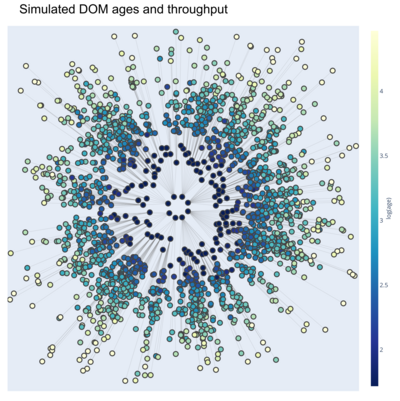Leonhard Lücken
Institute for Chemistry and Biology of the Marine Environment (» Postal address)
Carbon Cycling and Molecular Patterns in the Ocean

Dissolved organic matter (DOM) in the oceans is one of the major global carbon reservoirs. It is subject to various degradation and remineralizing processes, constitutes the nutritional basis for mixotrophic and heterotrophic consumers and its dynamics dertermine elemental sequestration balance in the oceans. Radiocarbon dating allows to determine average ages of up to 6000 year for DOM compounds. This can be explained by ad hoc models classifying compounds into classes of different bio-availability. Intriguingly, recent studies revealed that the enormous diversity and a corresponding huge dilution of any given compound may likewise explain resistance to degradation.
We develop models for the analysis of diversification and degradation of DOM compounds to point out and test alternative hypotheses regarding DOM persistence and distribution of concentrations and ages of different compounds. Further, we integrate the microbial component into mechanistic models for global distributions of organic DOM.
Further Information:
Mentges et al., "Functional Molecular Diversity of Marine Dissolved Organic Matter Is Reduced during Degradation", Frontiers in Marine Science (2017)Mentges et al., "Long-term stability of marine dissolved organic carbon emerges from a neutral network of compounds and microbes", Scientific Reports (2019)
Mentges et al., "Microbial Physiology Governs the Oceanic Distribution of Dissolved Organic Carbon in a Scenario of Equal Degradability", Frontiers in Marine Science (2020)



![[Translate to English:]](/f/5/_processed_/3/2/csm_ICBM-Logo-transparent-_91fe1c6774.png)